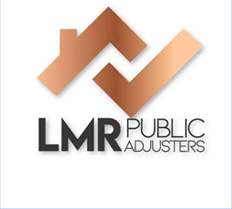Experiencing a lightning-induced fire can be both traumatic and overwhelming, especially when it comes to navigating the insurance claim process. At LMR Public Adjusters – South Florida’s premier public adjusters – we understand the challenges property owners face after such unexpected disasters. Our dedicated team specializes in helping homeowners and business owners maximize their insurance claims with personalized support every step of the way. In this guide, we’ll share essential tips for filing a claim after a lightning-induced fire, ensuring you’re well-prepared to protect your rights and recover your losses. From documenting fire damage to understanding your insurance policy coverage, these practical steps can make a significant difference in the outcome of your claim. Whether you’re dealing with smoke damage, structural issues, or electrical system failures, knowing how to file a lightning fire insurance claim effectively is key to a smoother recovery process.
Assess the Damage and Ensure Safety First

After experiencing a lightning-induced fire, your first priority should always be safety. Before initiating any insurance claim process, it’s crucial to evaluate the extent of the damage while ensuring that the environment is secure for you and your family. Fires caused by lightning can compromise the structural integrity of your home and create hidden hazards such as smoldering insulation or weakened support beams.
According to the National Fire Protection Association (NFPA), lightning strikes cause an estimated 22,600 fires annually in the U.S., resulting in hundreds of millions of dollars in property damage.
Begin by contacting emergency services if the fire is still active or if there’s any risk of reignition. Once the fire is extinguished and it’s safe to re-enter, document the damage thoroughly with photos and videos. This visual evidence will be essential when filing your insurance claim.
- Check for visible structural damage, especially in the attic or roof where lightning often strikes first.
- Inspect electrical systems and appliances for signs of short-circuiting or burn marks.
- Look for water damage caused by firefighting efforts, which may lead to mold growth if not addressed promptly.
If you’re unsure about the safety of your property, consult a licensed contractor or a certified fire inspector. For more guidance on what to do next, visit our FAQ page or explore our comprehensive property claims services.
For additional safety tips and fire recovery resources, check out the NFPA’s official website. Taking these initial steps ensures a smoother claims process and helps protect your long-term property value.
Contact Your Insurance Company Immediately

After experiencing a lightning-induced fire, one of the most critical steps is to get in touch with your insurance company as soon as possible. Prompt communication ensures that your claim process begins without unnecessary delays and helps preserve your eligibility for coverage. When you contact your insurer, be ready to provide detailed information about the incident, including the date, time, and extent of the damage. It’s also helpful to have photos or videos of the affected areas, along with any relevant documentation such as repair estimates or fire department reports.
Delaying this step can complicate your claim or even result in a denial. Insurance companies often have strict deadlines for reporting incidents, so acting quickly is essential. If you’re unsure about how to proceed or what information is required, consider consulting a professional public adjuster to guide you through the process.
Understanding the terms of your policy is also crucial. If you need help interpreting your coverage or navigating the claims process, visit our FAQ section for answers to common questions. You can also explore our property claims page for more detailed guidance on handling fire-related damages. Taking these steps early can significantly improve your chances of a successful and timely insurance claim.
Document Everything with Photos and Notes
After experiencing a lightning-induced fire, one of the most critical steps in filing a successful insurance claim is thorough documentation. Begin by taking clear, high-resolution photos of all affected areas, including structural damage, personal belongings, and any visible signs of fire or smoke. Capture multiple angles to provide a comprehensive view of the destruction. In addition to photos, maintain detailed notes about the incident—include the date and time of the fire, the sequence of events, and any immediate actions taken to mitigate further damage.
It’s also essential to keep receipts for emergency repairs, temporary lodging, or replacement items, as these can support your claim. If possible, create an inventory list of damaged or lost items, noting their estimated value and purchase dates. This level of documentation can significantly streamline the claims process and help ensure you receive fair compensation.
For those unfamiliar with the claims process, consulting with experienced professionals can make a substantial difference. Learn more about how we assist property owners by visiting our About Us page. If your home has suffered extensive damage, our team specializes in handling home damage claims with precision and care.
Proper documentation not only strengthens your claim but also protects your rights as a policyholder. Don’t leave anything to chance—record every detail to build a solid foundation for your insurance claim.
Understand What Your Policy Covers

Before filing a claim for a lightning-induced fire, it’s essential to thoroughly review your insurance policy to understand exactly what is covered. Many homeowners assume that all fire-related damages are automatically included, but policies can vary significantly in their terms and exclusions. For instance, while most standard policies cover fire damage caused by lightning, they may not include coverage for secondary issues such as electrical surges, damaged appliances, or smoke damage unless specifically stated.
Take the time to read through your policy’s declarations page and coverage details. Pay close attention to the sections related to fire, lightning, and personal property protection. If you’re unsure about any terms or coverage limits, consider reaching out to a professional for clarification. This step can help prevent delays or denials during the claims process.
Additionally, it’s important to understand the difference between actual cash value and replacement cost coverage, as this will affect how much compensation you receive. If your property has suffered extensive damage, you may benefit from consulting with experienced property claims specialists who can guide you through the process.
For more insights into how claims are handled and what to expect, visit our FAQ page. Being informed about your policy ensures you’re better prepared to protect your rights and recover your losses after a lightning-related fire.
Work with Fire and Electrical Inspectors
After experiencing a lightning-induced fire, collaborating with fire and electrical inspectors is a crucial step in the claims process. These professionals play a vital role in determining the origin and extent of the damage, which directly impacts the success of your insurance claim. Fire inspectors assess the scene to confirm that lightning was indeed the cause, while electrical inspectors evaluate the damage to your home’s wiring, appliances, and systems. Their reports provide essential documentation that supports your claim and ensures that all safety concerns are addressed before repairs begin.
It’s important to schedule inspections promptly and retain copies of all reports. These documents not only validate your claim but also help identify hidden issues that may not be immediately visible, such as compromised wiring or structural weaknesses. Working closely with inspectors also helps prevent future hazards, ensuring your property is safe for occupancy.
If you’re unsure how to coordinate with inspectors or navigate the claims process, consider seeking help from experienced professionals. At LMR Public Adjusters, we specialize in assisting property owners with various types of claims, including those related to home damage and commercial properties. Our team can guide you through every step, from documentation to negotiation, ensuring you receive the compensation you deserve. For more insights, visit our blog page for expert tips and updates.
Keep Records of All Communications and Expenses
When filing a claim after a lightning-induced fire, maintaining detailed records of all communications and expenses is essential for a smooth and successful claims process. Start by documenting every interaction with your insurance company, including phone calls, emails, and in-person meetings. Note the date, time, and name of the representative you spoke with, along with a summary of the conversation. This information can be invaluable if discrepancies arise or if you need to escalate your claim.
Equally important is keeping track of all expenses related to the fire damage. This includes temporary housing, emergency repairs, cleanup services, and any items you need to replace. Save all receipts, invoices, and estimates, as these will serve as proof of your losses and help justify your claim amount. Organizing these documents in a digital or physical folder can streamline the process and reduce stress during an already difficult time.
If your home or business has suffered fire damage, you may also want to consult with professionals who specialize in handling property claims. They can help ensure that your documentation is complete and that your claim is accurately represented. For more guidance, visit our FAQ page to find answers to common questions about the claims process. Taking these steps can significantly improve your chances of receiving a fair settlement.
Follow Up Regularly on Your Claim Status
Staying proactive after filing a claim for a lightning-induced fire is essential to ensure a smooth and timely resolution. Once your claim is submitted, it’s important to maintain consistent communication with your insurance company. Regular follow-ups help you stay informed about the progress, identify any missing documentation, and address potential delays before they escalate. Insurance companies handle numerous claims daily, so keeping your case top-of-mind can make a significant difference.
Document every interaction with your insurer, including dates, names of representatives, and summaries of conversations. This record can be valuable if disputes arise. Additionally, don’t hesitate to ask questions if something is unclear—understanding the process can help you avoid common pitfalls and ensure your claim is processed efficiently.
If you feel overwhelmed or unsure about how to proceed, consider working with experienced professionals like Pompano Beach public adjusters who can advocate on your behalf. They can help you navigate complex claim procedures and ensure your rights are protected. You can also explore our FAQ section for answers to common questions about the claims process.
By staying engaged and informed, you increase the likelihood of a favorable outcome and a quicker recovery from the damage caused by lightning-related fires.
In conclusion, navigating the aftermath of a lightning-induced fire can be overwhelming, but understanding the proper steps to file an insurance claim can make the process more manageable. By documenting the damage thoroughly, notifying your insurance company promptly, and keeping detailed records of all communications and expenses, you can help ensure a smoother claims experience. Don’t hesitate to seek professional guidance if needed, and always prioritize safety first. With the right approach, you can recover more efficiently and restore your home and peace of mind.







